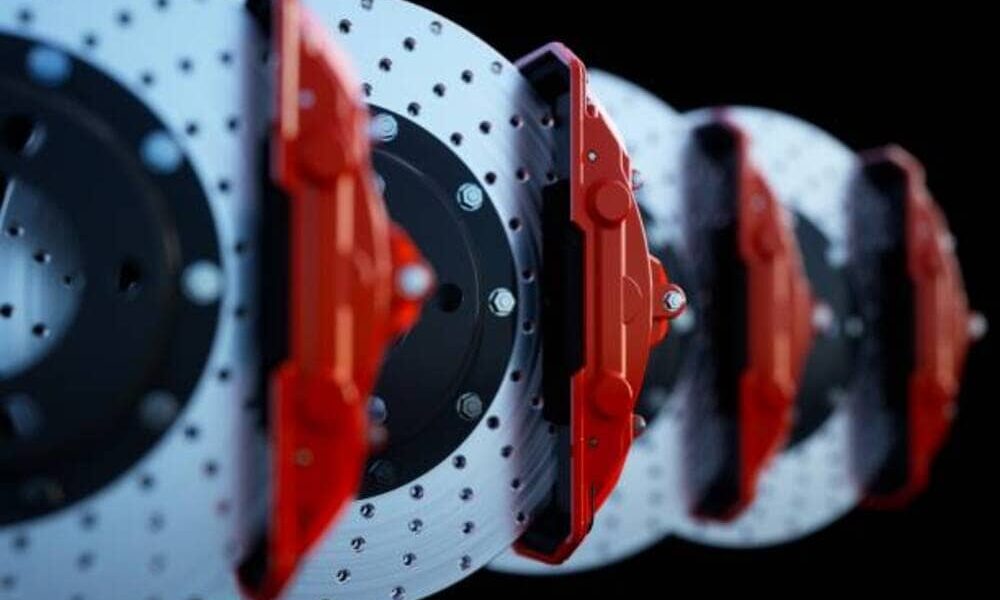
Some vehicles exhibit brake related concerns such as brake noise, brake judder or brake dragging. If you encounter a situation that causes you to experience one of these symptoms you should seek a professional mechanic to inspect your vehicle’s brake system. An experienced technician will address the specific brake symptom that is causing the concerning sensation from your vehicle’s brake system.
BRAKE NOISE
There are various types of brake noise and many different conditions that can cause noise. Frictional coefficient between brake pads and rotors varies depending on pad material, temperature, humidity, braking force, etc. During braking, the brake pads are pressed with great force against the brake rotor. This generates friction to bring the vehicle to a stop.
If the brake pads are of a soft compound, a more substantial amount of brake dust will appear on the wheels, and the pads will wear more rapidly, but there will be less chance of brake noise.
If the brake pads are of a hard compound (as used in high-performance applications), less brake dust will appear, the pads will last longer, and braking performance will be improved.
Finding a stable compound with the qualities of both hard and soft compounds is difficult.
SQUEAK OR GROAN NOISE:
If the noise experienced is a groan or squeak when the brakes are applied the pad material may be the source. New brake pads that are overheated before being adequately broken in can become ‘glazed.’ On some occasions scuffing the friction material can reduce the effects of overheating. If the pads do not have adequate thickness remaining, they must be replaced with new parts.
RATTLE OR CLUNK NOISE:
If a rattle or clunk noise is present, the technician will inspect and replace the brake pad shims and mounting hardware. If the brake pad assembly has excessive clearance and too much adjustment or shimming is required it may be necessary to replace the brake pad set.
The ASE professional brake technicians will inspect the brake rotors and remove old pad material deposits when possible. The high-grade synthetic lubricant will be applied to the brake pad backing plate to further reduce vibration and noise.
BRAKE DRAGGING NOISE:
If the noise is due to a brake dragging, you should seek an experienced mechanic to diagnose the source of the issue. The professionals will inspect the brake calipers and sliders to ensure they are not seized. If seized caliper slide pin(s) are found, they are appropriately removed in a manner that preserves their structural integrity and that of the brake caliper bracket. The caliper slide pin(s) are always cleaned and lubricated with every brake service at Hollenshade’s. The mechanics at Hollenshade’s will also evaluate the brake hydraulic system hoses and lines. An experienced mechanic will feel the condition of the caliper piston when returned during brake service. If excessive resistance is felt the technician will check the caliper piston boot for cracks, breakage, or poor sealing and possible water entry into the caliper piston cavity. A dragging brake pad will cause excessive heat and may warp the brake rotor. In extreme cases, excessive heat can damage the wheel bearing.
BRAKE JUDDER:
Brake judder (or warping) is caused by the uneven thickness (run-out) of the brake rotor. During braking, the clearance between the pads and rotor becomes broader and narrower. This produces force onto the pads and may create a vibration. Vibrations are transferred through the brake hydraulic system and/or suspension and can be felt through the brake pedal, vehicle floor and/or steering wheel. Even micron-size unevenness may cause a degree of brake judder. Brake judder is more noticeable when slowing from a higher speed.
BRAKE JUDDER POTENTIAL REPAIRS
The brake rotor will need to be replaced if the unevenness (run-out) is significant enough that resurfacing it will reduce the minimum thickness of the rotor past the manufacturer’s stated minimum.
Excessive heat damage will need to the rotor or pad (heat cracking) will require it’s replacement.
Significant rust and corrosion on the brake rotor, rotor hat, or cooling fins are also signs the brake rotor should be replaced during repairs and service.
Courtesy of hollenshades










